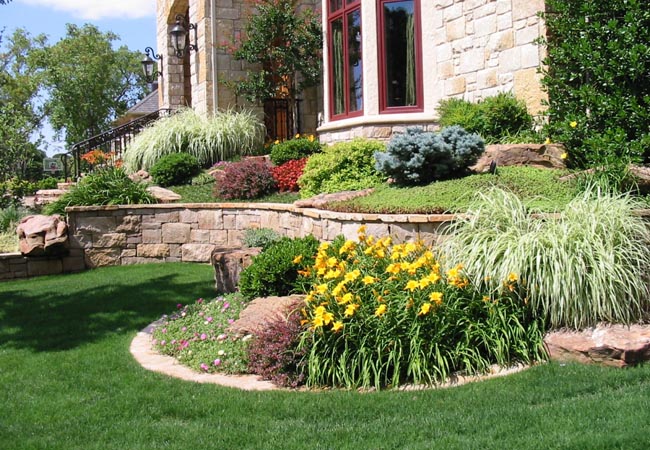Landscaping is much more than just planting a few flowers or mowing the lawn; it is a blend of creativity and technique that transforms outdoor spaces into useful and visually appealing environments. Whether you are improving your home’s exterior appearance or creating a welcoming atmosphere for your business, spending in professionally designed landscaping can yield considerable returns. This guide will help you explore the world of landscaping, introducing you to the many facets that play a key role in achieving a beautiful and healthy outdoor space.
From comprehending the benefits of hiring a landscaping service to examining the most common errors and how to prevent them, this ultimate guide covers everything you need to be aware of. We will explore key topics like lawn care and maintenance, garden design and plant selection, hardscaping, seasonal landscaping tips, and sustainable practices that make your yard not only attractive but also environmentally friendly. Whether you are a DIY enthusiast or considering hiring professional help, we have ideas and tips that cater to all skill levels. Join us as we discover how to elevate your outdoor spaces and create a landscape that you can be proud of.
The Benefits of Expert Landscaping
Financing expert landscaping provides homeowners and businesses both visual appeal but also considerable economic value. An effectively designed landscape design can increase property value dramatically, with studies revealing that expert landscaping can add as much as 15 percent to the overall worth of a home. Such an investment in external beauty not only lures potential buyers while it can also create a sense of pride and satisfaction for existing owners.
Beyond increasing property value, engaging a landscaping service gives expertise that secures both functionality and innovation in design. Expert landscapers bring knowledge of local weather patterns, soil types, and native plants, permitting them to create a landscape that prospers year-round. Such a expertise commonly results in landscapes that are not just stunning and also sustainable and tailored to the specific needs of the environment, important for crucial for longevity and maintenance.
Furthermore, expert landscaping frees up valuable time for homeowners and business owners. The complexities involved in design, plant selection, and ongoing maintenance can be daunting and time-consuming. By assigning these responsibilities to capable landscapers, property owners can enjoy their outdoor space without stress, which ensures that every element from lawn care to hardscaping is managed efficiently and effectively.
Fundamental Lawn Care Techniques
Maintaining a vibrant lawn requires ongoing attention and effort. One of the key crucial practices is frequent cutting. Keeping https://groundsmaintenance-yorkshire.co.uk/ at the appropriate height not only improves its aesthetic but also promotes root growth and reduces weeds. It's important to mow with well-maintained blades to ensure clean cuts, which can prevent diseases. A common recommendation is to avoid more than one-third of the grass height at once, as this can strain the grass.
Nutrition is another important aspect in lawn care. Applying the right type of fertilizer, based on soil tests, helps in supplying the critical nutrients your lawn needs to succeed. The timing of applications is also important; typically, a spring application helps in green-up from winter dormancy, while fall fertilization gets the lawn for the impending colder months. Frequently testing your soil can allow you to understand nutrient deficiencies and fine-tune your fertilization routine accordingly.
Watering plays a vital role in keeping your lawn vibrant and healthy throughout the year. Effective watering practices, such as thoroughly watering less frequently, encourage deep root systems that are more resistant to drought. It's recommended to water in the morning as this minimizes evaporation and enables the grass to absorb moisture before the heat of the day. Keeping track of rainfall and modifying your watering timing can lead to significant improvements in maintaining a lush landscape.
Eco-Friendly Landscaping Practices
Incorporating sustainable landscaping practices is crucial for establishing a green outdoor environment while enhancing the beauty of your property. Selecting local plants is a particularly efficient strategies; these species are adapted to the local climate and soil conditions, requiring fewer water and maintenance compared to non-native varieties. Native plants also promote biodiversity by offering habitats for local wildlife, such as pollinators and other beneficial insects, which contributes to a more robust ecosystem.

A further key aspect of eco-friendly landscaping is the adoption of water-efficient methods, such as xeriscaping. This approach centers around creating landscapes that reduce water usage through the selection of drought-resistant plants and the strategic placement of hardscaping features. Incorporating rain gardens and permeable paving can also help manage stormwater runoff, allowing water to infiltrate into the ground instead of contributing to erosion and pollution. These solutions not only diminish water use but also enhance the visual appeal of your yard.
Lastly, sustainable landscaping often features organic gardening techniques, such as composting and natural pest control. By using organic fertilizers and implementing integrated pest management, you can maintain a healthy landscape without depending on harsh chemicals. This not only benefits the well-being of your plants but also protects local waterways and wildlife from harmful runoff. Embracing these eco-friendly landscaping practices guarantees your outdoor space stays vibrant while reducing your overall environmental impact.
